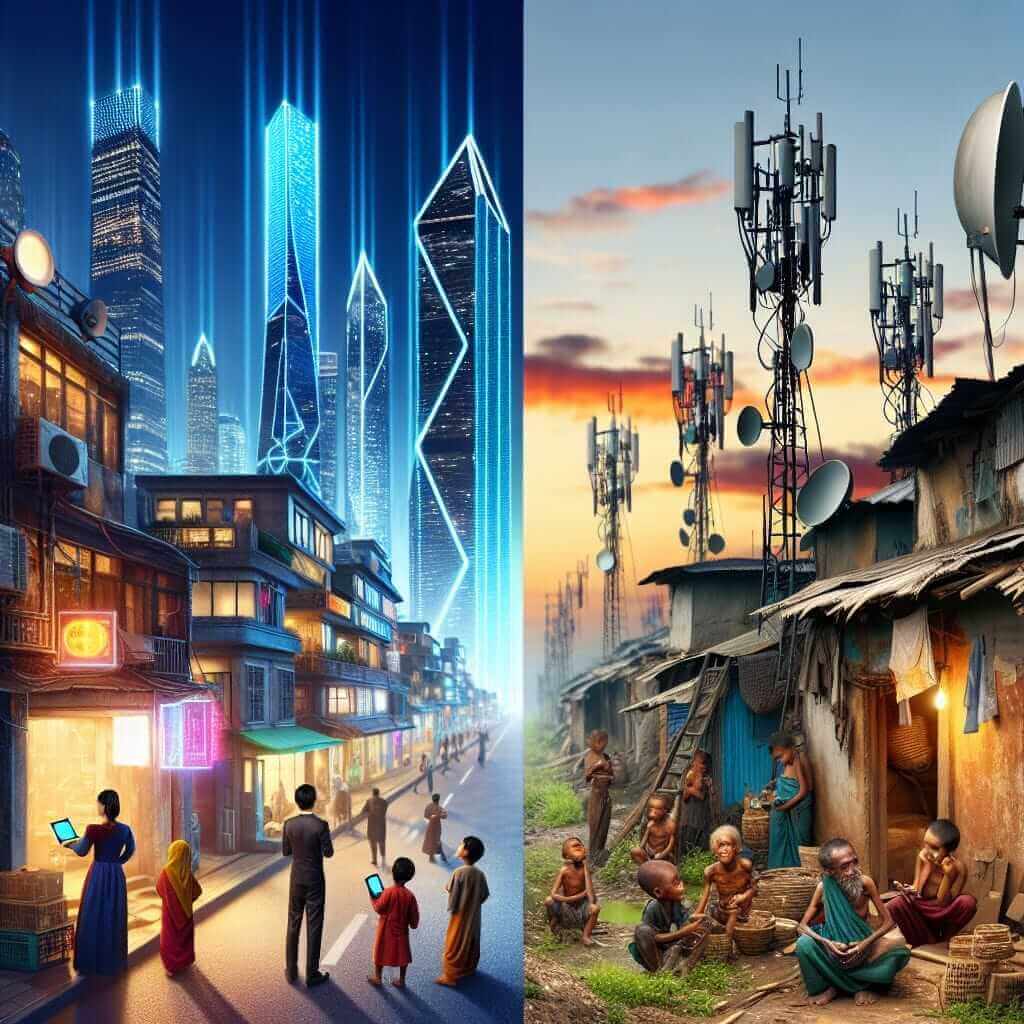In the IELTS Reading test, candidates are often challenged with comprehension of complex topics. One prevalent subject that has gained traction in recent years is “digital equity.” Given its relevance in today’s technology-driven world, understanding the challenges of ensuring digital equity is a viable theme for IELTS preparation. This article delves into this topic, providing a comprehensive reading practice designed to mirror the actual IELTS exam format.
What are the Challenges of Ensuring Digital Equity?
Reading Passage
Digital equity refers to the fair access to technology and the internet, critical for participating in modern society. Despite its importance, several challenges impede the realization of digital equity across different regions and demographics. These challenges include, but are not limited to, infrastructural deficiencies, socioeconomic disparities, and variances in digital literacy.
Infrastructural Deficiencies: One principal challenge is the discrepancy in technological infrastructure between urban and rural areas. Developed cities often enjoy high-speed internet and state-of-the-art devices, whereas remote locations might struggle with basic connectivity. This digital divide exacerbates educational and professional inequities, as those in underserved areas cannot access the same online resources.
 Digital Divide Illustration
Digital Divide Illustration
Socioeconomic Disparities: A significant determinant of digital access is economic status. Devices like smartphones, laptops, and even Wi-Fi require substantial investment, often beyond the reach of lower-income families. Consequently, children from these backgrounds face impediments in their education, given the increasing reliance on digital tools for learning.
Variances in Digital Literacy: Even with access to technology, a gap in digital literacy can prevent individuals from leveraging these tools effectively. Digital literacy encompasses the skills required to utilize technology for communication, information retrieval, and problem-solving. Without these skills, access to technology alone does not translate to meaningful participation in the digital age.
Questions
Multiple Choice
-
According to the passage, what is one main challenge to achieving digital equity?
a) High-speed internet
b) Infrastructural deficiencies
c) Increased reliance on mobile phones
d) Changes in educational policies -
In the context of the passage, why is socioeconomic status crucial for digital equity?
a) It determines national educational policies.
b) It influences local technological advancements.
c) It affects the affordability of digital devices.
d) It changes global internet policies.
True/False/Not Given
- Remote areas are entirely devoid of technological infrastructure. (True/False/Not Given)
- Socioeconomic disparities only affect children’s education. (True/False/Not Given)
- Digital literacy includes problem-solving skills. (True/False/Not Given)
Sentence Completion
- Despite having technological access, individuals without ____ cannot fully participate in the digital age.
Matching Information
-
Match the challenges to their impacts:
a) Infrastructural deficiencies
b) Socioeconomic disparities
c) Variances in digital literacyi) Difficulties in leveraging technology effectively.
ii) Lack of basic connectivity in some areas.
iii) Financial barriers to obtaining digital devices.
Answers and Explanations
-
b) Infrastructural deficiencies
Explanation: The passage explicitly mentions infrastructural deficiencies as a principal challenge to digital equity. -
c) It affects the affordability of digital devices.
Explanation: The passage states that economic status impacts the affordability of devices like smartphones and laptops. -
False
Explanation: The passage indicates that remote areas struggle with basic connectivity, but it does not state they are entirely devoid of infrastructure. -
False
Explanation: Socioeconomic disparities affect more than just children’s education, impacting overall access to technology and the internet. -
True
Explanation: The passage defines digital literacy as including skills for communication, information retrieval, and problem-solving. -
digital literacy
Explanation: The sentence completion requires knowledge that digital literacy is crucial for participating in the digital age. -
a) ii) Lack of basic connectivity in some areas.
b) iii) Financial barriers to obtaining digital devices.
c) i) Difficulties in leveraging technology effectively.
Common Mistakes and Tips
- Misinterpreting the question: Ensure you fully understand what each question asks. Misinterpretation can lead to incorrect answers.
- Glossing over details: Pay attention to specific terms and nuances in the text. Small details often hold the key to the correct answer.
- Time management: Practicing under timed conditions can help improve your pace and efficiency during the actual exam.
Vocabulary
- Infrastructural (adj) – /ˌɪnfrəˈstrʌktʃərəl/ – related to the basic physical systems of a business or nation.
- Socioeconomic (adj) – /ˌsəʊsiəʊˌˌiːkəˈnamɪk/ – relating to or involving social and economic factors.
- Disparity (n) – /dɪˈspærəti/ – a notable difference or distinction.
Grammar Focus
-
Complex Sentences: Used to provide detailed explanations.
- Example: “Despite having technological access, individuals without digital literacy cannot fully participate in the digital age.”
-
Passive Voice: To emphasize the action rather than the subject.
- Example: “These challenges are compounded by socioeconomic disparities.”
Conclusion
Understanding the challenges of ensuring digital equity is a crucial topic within the IELTS Reading test. By practicing with passages on such relevant themes, candidates can enhance their comprehension skills and prepare effectively for the exam.
Recommendations
To achieve a high score in the Reading section, incorporate the following practices:
- Regularly read diverse materials on current issues.
- Practice with real IELTS reading samples.
- Improve your vocabulary through consistent learning and application.
- Manage your time efficiently during practice sessions.


